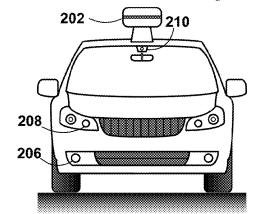Google’s autonomous car will get you to your destination… almost.
 Waymo’s patent application publication US 20170220045 A1 is refreshingly candid: An autonomous car may not get you all the way to your destination since it will only be allowed to travel on pre-approved roads.
Waymo’s patent application publication US 20170220045 A1 is refreshingly candid: An autonomous car may not get you all the way to your destination since it will only be allowed to travel on pre-approved roads.
Waymos answer: “A method, comprising: receiving, by a computer system, an input indicating a final destination, wherein the computer system is configured to control a vehicle in an autonomous mode; determining, by the computer system, that the final destination is not on a pre-approved road for travel by the vehicle in the autonomous mode, wherein the vehicle is operable in the autonomous mode only when the vehicle is on the one or more pre-approved roads; selecting, by the computer system, a route from a current location of the vehicle to an intermediary destination, wherein the route only comprises one or more pre-approved roads for travel by the vehicle in the autonomous mode; navigating, by the computer system, the vehicle in the autonomous mode such that the vehicle traverses the one or more pre-approved roads of the route from the current location to the intermediary destination; parking, by the computing system, the vehicle at the intermediary destination; and determining, by the computer system, a transport mode to reach the final destination, wherein the transport mode to reach the final destination does not include navigating the vehicle in the autonomous mode.”
For the non-patent practitioners: The autonomous car will only drive autonomously to an intermediate location and then find a different transport mode to the final destination. What is that other transport mode? A taxi, a bus, or walking – if you are drunk. If you can prove to your car that you are not impaired it may also let you drive the final stretch to your destination in non-autonomous mode.
“In another example, the vehicle user may simply inform the vehicle that he or she plans to drink at a bar. This information may trigger the vehicle to operate in a fully autonomous mode. If the vehicle user subsequently wants to remove the fully autonomous mode setting or otherwise drive the vehicle , the vehicle user may be required to demonstrate that he or she is able to operate the vehicle, e.g., non-impairment.”